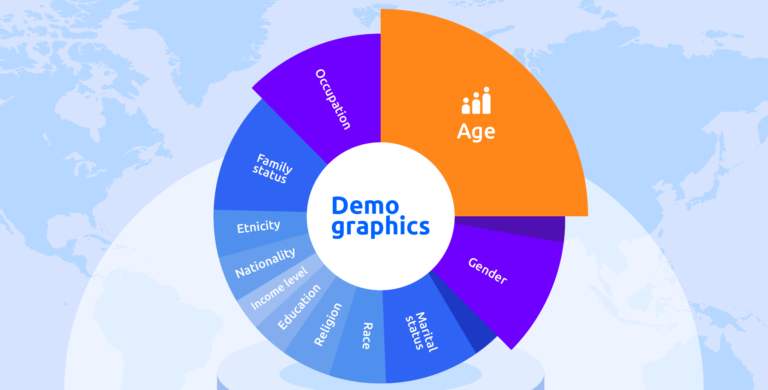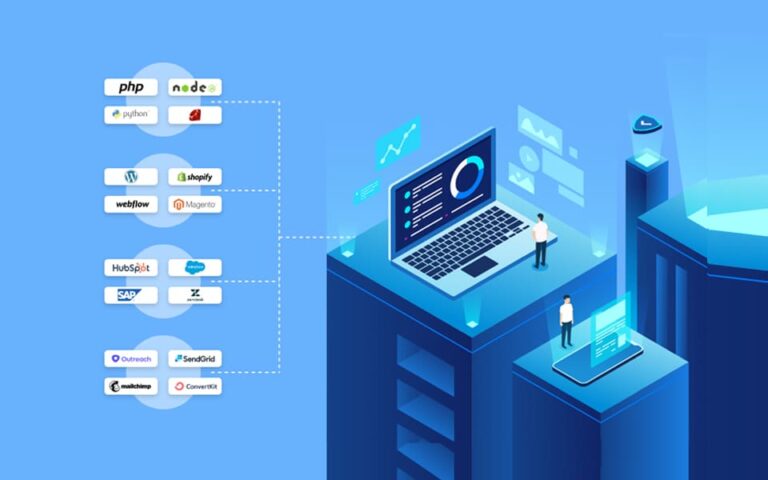How to Customize Your GTM Motion Using Different Customer Data Types
It is now important to use consumer data to optimize your go-to-market (GTM) strategy. A multitude of data collected from several touchpoints is referred to as customer data, which provides insights into the needs, preferences, and behavior of the consumer. You can optimize your GTM motion to provide individualized experiences, target the appropriate audience, and promote long-term growth by utilizing the power of this data.
The importance of customer data and customer data management in your GTM motion will be discussed in this article. We’ll go over the many kinds of consumer data you should be concentrating on and the resources that may help you make the most of it.
Customer Data: What Is It?
Customer data is information gathered from people using a business’s platforms, services, or products. This information can include demographics, previous purchases, preferences, behavior patterns, and feedback. Usually, a variety of methods are used to collect this data, including surveys, social media interactions, online purchases, and customer service encounters

Why Is Customer Information Important?
Customer information is valuable to all industries for many reasons:
Personalization: Personalized communications increase client loyalty and satisfaction. Gaining insight into the tastes and habits of your customers enables you to customize your products, promotions, and interactions with them to meet their specific demands.
Targeted Marketing: The key to targeted marketing is thoroughly understanding your audience through data research. By gathering and classifying consumer information, examining patterns, and developing thorough buyer personas, you may customize your advertising to appeal to the interests and habits of particular target audiences. You’ll effectively address their demands with messaging that you send by using optimized and personalized content channels. By tracking campaign effectiveness over time, you can make adjustments and optimize your efforts to ensure your marketing is effective and efficient.
Smarter Products and Services: Consumer data offers insightful information about the wants, needs, and pain areas of the consumer. You can use this knowledge to improve current products or create new ones that better satisfy consumer demands.
Retention and Loyalty: You can anticipate client wants, proactively handle concerns, and deliver first-rate customer service by utilizing customer data. This encourages client loyalty and long-term connections.
Competitive Advantage: By identifying new market trends and rival weaknesses, efficiently utilizing consumer data can give an advantage over competitors. You can get an advantage in innovation and customized offers by anticipating changing consumer demands and preferences through the analysis of demographics, purchasing behavior, and feedback. This proactive strategy helps you stay ahead of the competition, build enduring client relationships, and expand your business.
Revenue Growth: You can find possibilities to upsell or cross-sell goods and services, which will eventually result in higher revenue, by analyzing customer behavior and preferences.
Risk Mitigation: By identifying possible risks like fraud or churn, you may take proactive steps to reduce them with the aid of customer data analysis.
Which Kinds of Customer Data Are Available?
Every company ought to concentrate on the following six categories of client data:
Information about Demographics: Customer demographics contain details about their age, gender, income, marital status, education level, and location.
Targeted marketing: Understanding the precise demographics you are targeting is made easier with the use of demographic data. Knowing your target audience’s age, gender, geography, and other demographic information will help you customize your marketing tactics.
Product Development: Product development activities can be directed by having a thorough understanding of the demographics of your clientele. For instance, you might give priority to mobile-friendly features or goods that fit with the lifestyle of your younger clientele.
Customer Segmentation: You can divide your customer base into groups based on shared traits by using demographic data. More individualized client experiences, product recommendations, and marketing are made possible by this segmentation
How to Gather Demographic Information

Lead generation forms: Usually located on landing pages or websites, these forms ask for contact details like name, email, age, gender, and location. Occasionally, they also ask for occupation and income level.
Customer surveys: You can collect demographic data on your customers by sending out surveys by email, social media, or in-person interactions. Age, gender, household size, income, degree of education, and other details are all possible questions.
Website Analytics: Utilizing information such as IP addresses, browser cookies, and user accounts, website analytics systems monitor the demographics of visitors. This information sheds light on the demographics, device usage, and geographic location of website visitors.
Social Media Insights: Users and followers’ age, gender, location, hobbies, and behaviors are just a few of the demographics that social media platforms reveal. When using marketing campaigns to target particular audience segments, this knowledge is helpful.
Purchase History: Customer demographic patterns, including age groups, geographic locations, and product preferences, can be gleaned by looking at previous transactions.
Third-Party Data suppliers: Companies can also purchase demographic data from third-party suppliers, who compile data from multiple sources, including consumer databases, public records, and surveys.
Firmographic Information

Business information such as size, industry, revenue, location, and organizational structure is referred to as firmographic data.
B2B targeting involves adjusting marketing and sales strategies to a company’s unique needs by having a thorough understanding of its industry, size, and organizational structure.
Market analysis: Examining firmographic data can reveal information about competitive environments, market trends, and prospective areas for collaboration or growth.
Tailored Offerings: You can tailor your offerings to each client’s specific requirements by taking into account the attributes of the firm, such as its size or income.
How Business Websites Gather Firmographic Data:
Targeted Sales and Marketing: Based on their technological preferences, prospects who are likely to be interested in your goods or services can be found using demographic data. Targeted marketing and sales campaigns are made possible by this information.
Ideal Customer Profile (ICP): When creating your Ideal Customer Profile (ICP), technological data is essential. You can find trends and traits that characterize your ideal prospects by examining the technology that your most successful customers use. This makes it possible for you to focus on businesses that share your interests in technology, which raises the possibility of fruitful sales interactions and better fits your product offers with the demands of your target market.
Competitive Insights: Knowing your target market’s technological environment gives you insight into the tactics used by your rivals. Let’s say, for instance, that your research indicates a large number of your competitors’ clients are utilizing antiquated or inefficient technological solutions. If so, it can be a sign that you have a chance to present a more sophisticated or effective solution. Likewise, should you observe an increasing pattern of use for a specific kind of software within your intended market, this may indicate a change in consumer preferences that you may take advantage of by tailoring your products to suit.
Product compatibility: Using demographic data, you may make sure that your goods work with the tech stacks that your prospective clients already have.
How Technographic Information Is Gathered

Website tracking is the study of technology, such as tracking pixels, JavaScript tags, or server logs, that are employed on a business’s website.
B2B Data Providers: To obtain extensive technographic data, use B2B data providers like SalesIntel. These companies compile data from multiple sources and give databases that are enhanced with specifics regarding the technologies that businesses in your target market are using.
API Integrations: By integrating with outside programs or APIs that offer information about the software stacks of your target users, you can obtain technical data.
Public Databases: Information about a company’s technology stack that is accessible to the general public through websites run by companies, industry reports, or LinkedIn.
Quantitative Information

Numerical information that can be measured and studied, such as sales numbers, internet traffic, customer counts, and conversion rates, is referred to as quantitative data.
Performance Metrics: You may track target progress, spot trends, and make data-driven decisions with the use of quantitative data, which offers objective measurements of corporate performance.
ROI Analysis: You may assess the return on investment (ROI) of different marketing campaigns, initiatives, and strategies with the use of quantitative data.
Predictive analysis is the process of making proactive decisions by utilizing quantitative data analysis from the past to forecast future patterns and behaviors.
How to Gather Quantitative Information
Transactional Records: Keeping track of past orders, payments, and transactions with customers.
Web analytics: Monitoring data from websites, including traffic, time spent on page, bounce rates, and conversion rates.
Surveys and Feedback Forms: Using numerical replies, multiple-choice questions, or rating scales to collect quantitative feedback.
Using Customer Data to Improve Your GTM Strategy: From Data to Decisions

You have access to more customer data than ever before as you concentrate on data-driven strategies and decision-making. From firmographics, intent, and quantitative and qualitative data to technographic and demographic data, each form of data provides distinct insights into the behavior, preferences, and needs of customers.
Effective data collection, analysis, and action are essential to meeting corporate goals and providing outstanding customer experiences. You may develop more individualized, focused, and successful GTM plans that connect with your target market and promote long-term success by making use of the wide variety of customer data types that are readily accessible.
Choose Campaignburst, the Best B2B and Customer Data Provider
Data is the key to success in today’s demanding corporate environment. Having the correct data partner is essential whether you want to improve your marketing tactics, broaden your market reach, or hone your consumer insights. Campaign Burst is the best option available for customer and B2B data solutions. Here’s why you should to pick us:
Advantages of Selecting Campaign Burst
Increase Income and Sales: Drive your sales growth by converting leads into devoted clients through accurate targeting and relevant analytics.
Enhance Advertising Campaigns: By providing individualized experiences and having a deeper understanding of your customers, you can improve your marketing strategies.
Enhance Customer Connections: Gain a deeper understanding of your consumers’ wants and preferences to establish data-driven, stronger partnerships.
Move Forward with Campaignburst !
Become one of the prosperous companies that has used Campaignburst’s data solutions. With reliable data, you can take your B2B tactics and consumer interactions to the next level.
Are You Ready to Use the Power of Data to Transform Your Company?
Contact us right now to find out more about how Campaign Burst may support you in reaching your company’s objectives. To witness our solutions in action, arrange a free consultation or submit a demo request.
